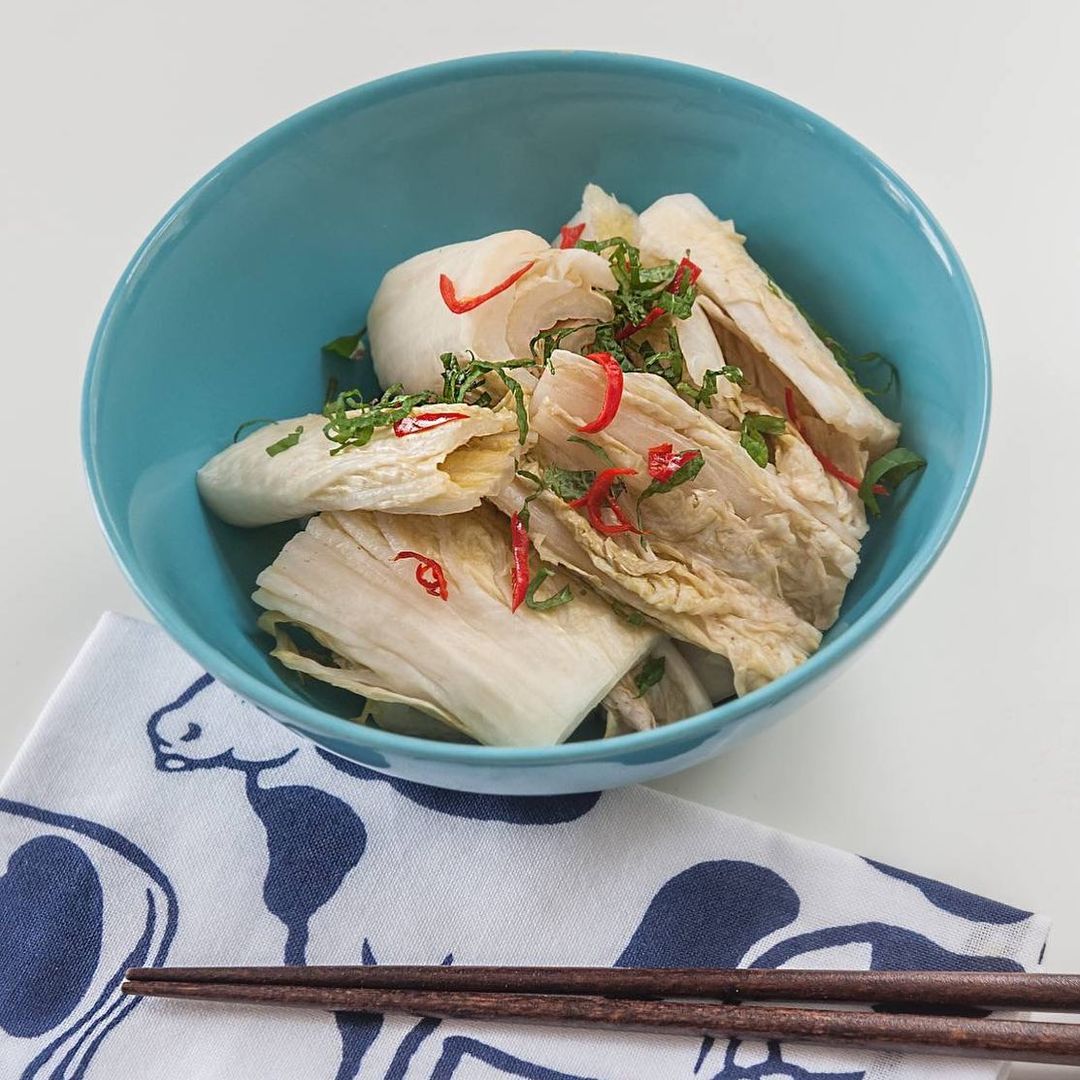
A ubiquitous winter sight at any supermarket or greengrocer in Japan is stacked heads of “hakusai” (literally “white vegetable”), also widely known as napa or Chinese cabbage. This versatile vegetable is used in so many dishes you would assume it has been around for a long time in Japan, but its history in the country is actually quite short. The napa cabbage truly came into its own in the aftermath of the Great Kanto Earthquake of 1923, when a wholesaler from what is now part of Sendai, Miyagi Prefecture, sent trainloads of the vegetable to the devastated Tokyo area. Previously, a green brassica called “mishimakawana” had been the main leafy vegetable used by people in Kanto for winter pickling. Afterwards, the mishimakawana, along with the small farms and homesteads that grew it, almost disappeared, and the napa cabbage became king, especially after the introduction of varieties that stood up well to long-distance shipping. Click on the link in our bio for a recipe for Japanese pickled napa cabbage (“hakusaizuke”). 📸 Makiko Itoh
.
.
.
.
.
.
#Japan #Tokyo #japanesefood #japanesecooking #recipe #veggies #vegetables #japantimes #japanesekitchen #日本 #東京 #日本料理 #料理 #レシピ #白菜 #野菜 #漬物 #つけもの #ジャパンタイムズ #🥗

AloJapan.com